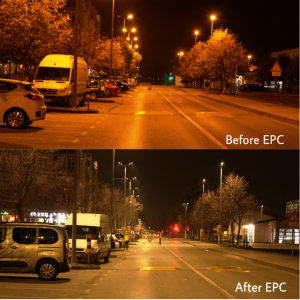
Energy efficiency investment in Europe, a bigger gap than expected?
According to the FI-Compass report “The potential for investment in energy efficiency through financial instruments in the European Union”[1], the estimated required investment in energy efficiency in this decade (calculated according to data from the National Energy and Climate Plans of the EU Member States) is EUR 62.6bn per annum. However, EC estimates a much higher investment gap over the next decade: EUR 185bn per annum for all Member States. Although the funds available for green and digital transition from European Structural and Investment Funds and the Mechanism for Recovery and Resilience seem substantial, they are inadequate to cover the wide investment gap for energy efficiency investments. Therefore, there is an evident need to seek and apply new financial instruments and models with a high leverage effect for such investments.
One of the possible answers to such need is the use of the Energy Performance Contract (EPC), which transfers the technical and economic risks of the energy efficiency investment to the energy service provider (often referred to as ESCO), and the investment cost is financed from the realized energy savings guaranteed by the energy service provider.
REGEA has been one of the ardent EPC advocates for several years and together with the municipalities in its area has modernised public lighting systems across 26 municipalities using the EPC model within the NEWLIGHT project financed by the EIB ELENA facility. This resulted in more than 54.000 reconstructed luminaires and more than 21 GWh of energy saved annually. The use of the EPC model is also foreseen for the modernisation of the public lighting system in the City of Zagreb, where it is expected to replace about 40% of the existing public lighting system, which amounts to about 50.000 luminaires. Besides the EPC application in public lighting systems, EPC in Croatia is and will continue to be used in the energy renovation of public buildings and a hefty amount of funds from the Recovery and Resilience Facility is dedicated to the renovation of public buildings using this model.

However, with the large influx for EPC projects, existing ESCOs, particularly small and mid-size, are in search of solutions that would provide them with long-term and affordable debt financing but also allow them to borrow for new investments. Enter refinancing and coupling the EPC model with forfaiting!
Within the REFINE project, REGEA is working on creating solutions that will facilitate the financing of energy efficiency projects and adapting it to the needs of national stakeholders. Certain elements of financial instruments aimed at refinancing energy efficiency projects are not new in the financial market in Croatia, but their application in the ESCO market is a novelty.
In cooperation with various partners from industry and finance, REGEA is developing a concept of refinancing and a guarantee instrument that would enable ESCOs to sell receivables from a successfully implemented ESCO project, clean their balance sheet and continue investing in new energy efficiency projects. The application of such an instrument would open numerous development opportunities for ESCOs, but also for financial institutions that want to build a portfolio of green and sustainable investments following the EU Taxonomy.
References:
[1] The potential for investment in energy efficiency through financial instruments in the European Union, https://www.fi-compass.eu/sites/default/files/publications/The%20potential%20for%20investment%20in%20energy%20efficiency%20through%20financial%20instruments%20in%20the%20European%20Union%20-%20Executive%20summary.pdf

